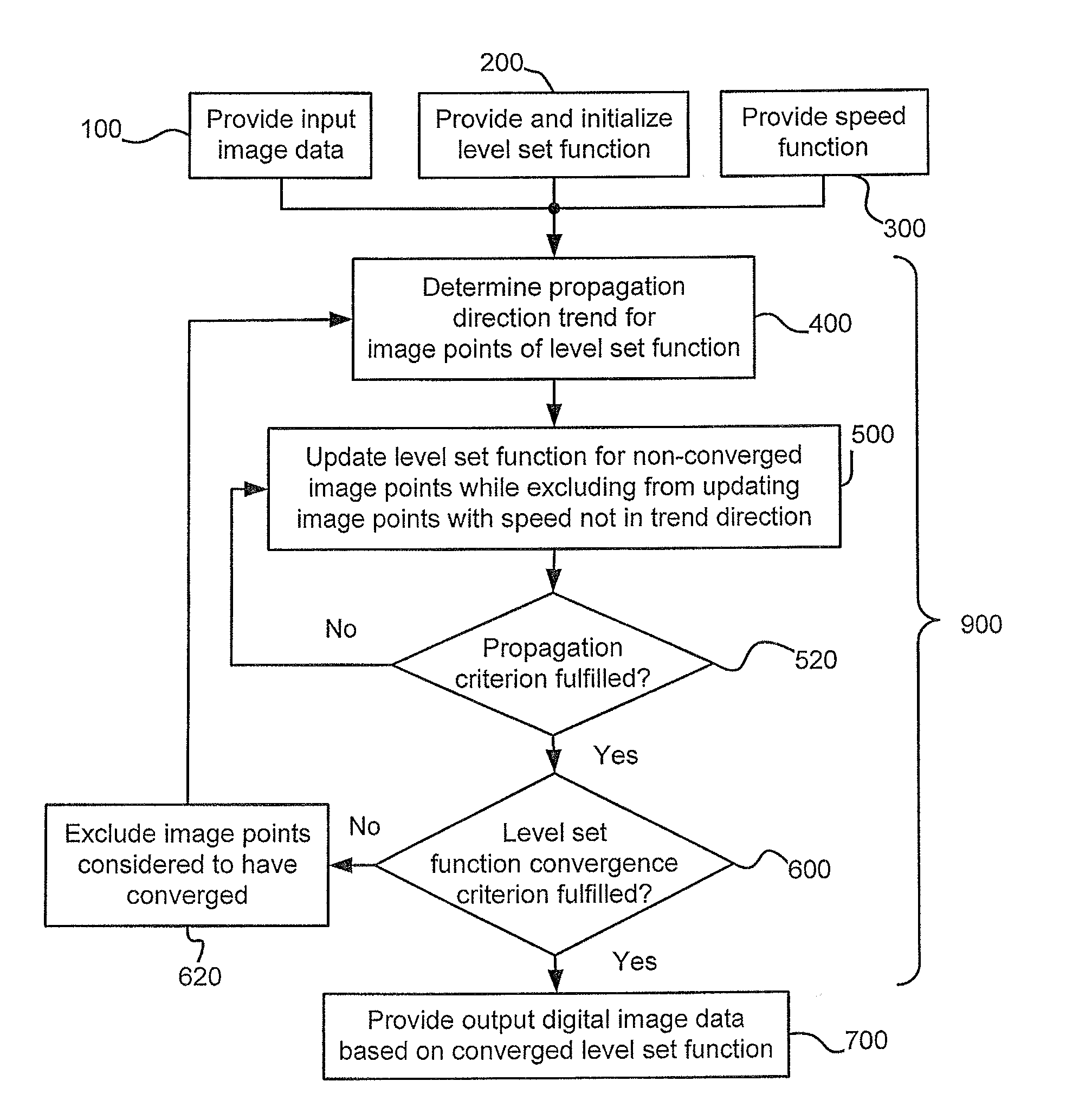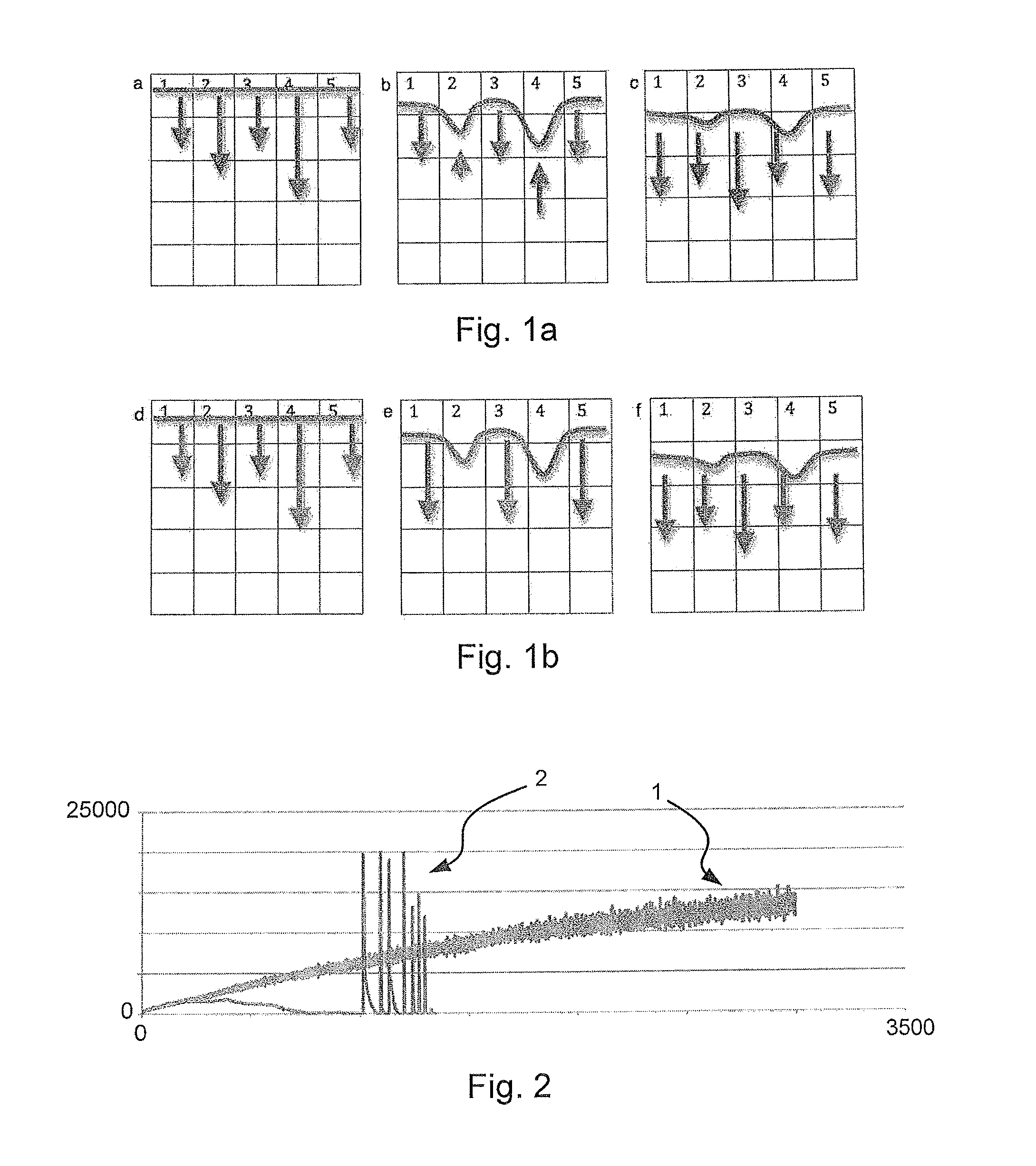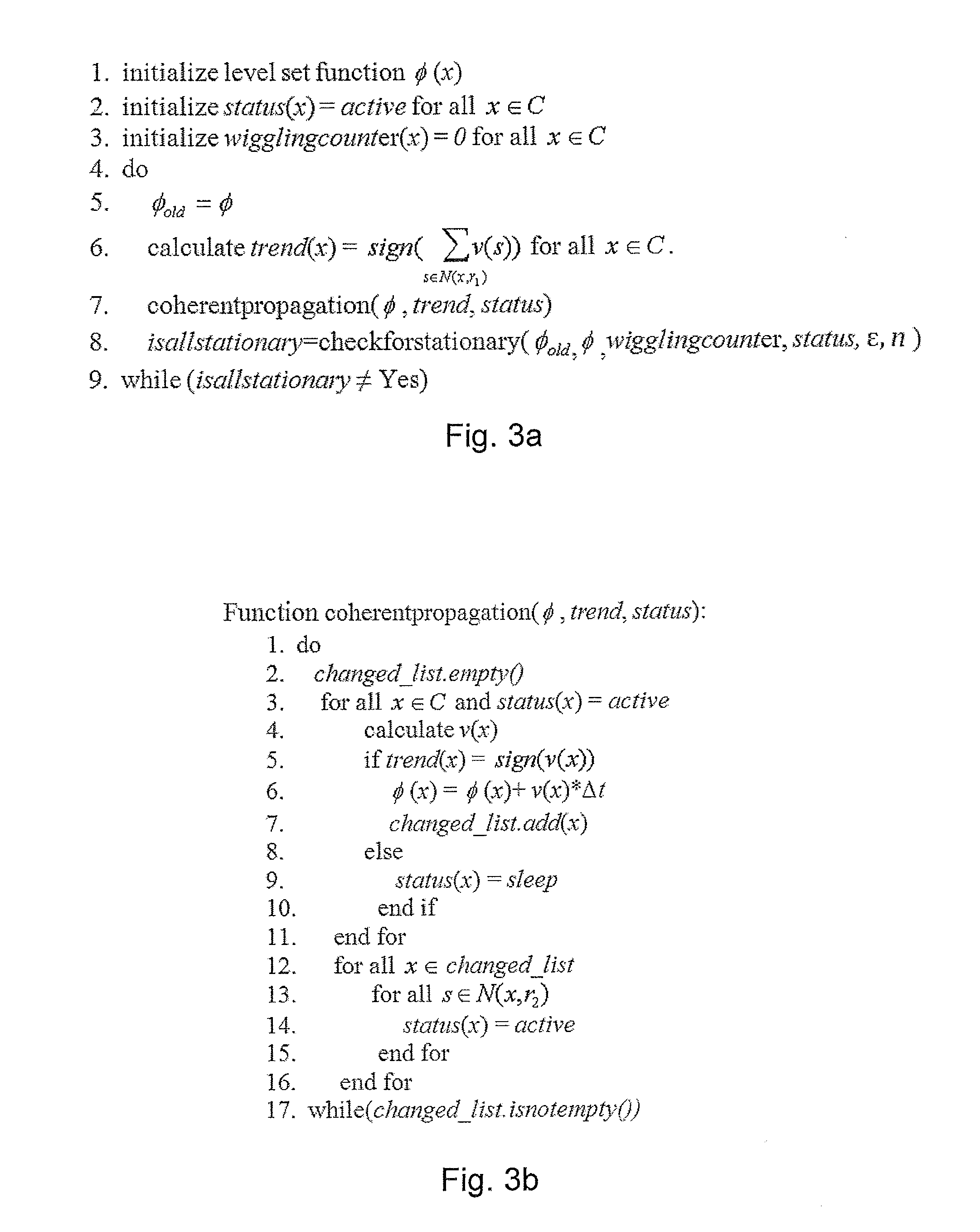Level set function based image processing
a level set function and function technology, applied in image data processing, instruments, character and pattern recognition, etc., can solve the problems of long analysis time, complicated workflows, and many failures to give satisfactory results, and achieve the effect of speeding up and greater
- Summary
- Abstract
- Description
- Claims
- Application Information
AI Technical Summary
Benefits of technology
Problems solved by technology
Method used
Image
Examples
Embodiment Construction
[0045]Although the present solution, as will be recognized by the skilled person, can be used with in principle any kind of image processing method where the level based method can be applied, it may be particularly advantageous to use in the case of shape recognition / recovery in images, in particular image segmentation, and preferably in combination with a narrow band approach.
[0046]An embodiment related to segmentation will first be discussed in some detail, including details from implementation and verification:
[0047]The inventors noticed that when certain points during propagating move faster than their neighbors, the curvature force will move them backwards to keep the contour (not necessarily but often the contour of 0-level set) smooth, even though the whole neighborhood will eventually move forwards. Such kind of local wiggling behavior slows down the propagation considerably as it repeats. Based on this finding the inventors propose a modified sparse field level set method,...
PUM
 Login to View More
Login to View More Abstract
Description
Claims
Application Information
 Login to View More
Login to View More - R&D
- Intellectual Property
- Life Sciences
- Materials
- Tech Scout
- Unparalleled Data Quality
- Higher Quality Content
- 60% Fewer Hallucinations
Browse by: Latest US Patents, China's latest patents, Technical Efficacy Thesaurus, Application Domain, Technology Topic, Popular Technical Reports.
© 2025 PatSnap. All rights reserved.Legal|Privacy policy|Modern Slavery Act Transparency Statement|Sitemap|About US| Contact US: help@patsnap.com



